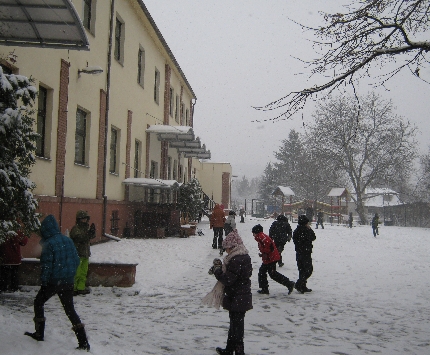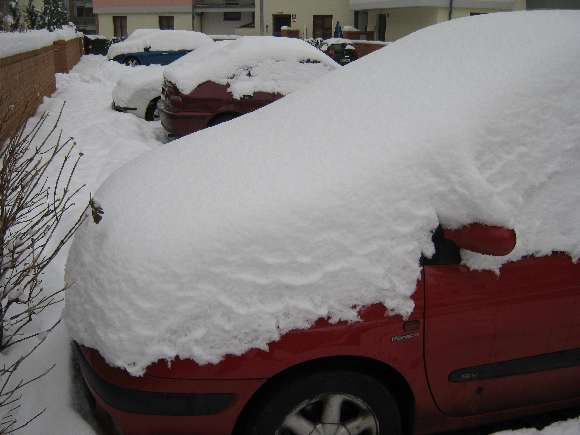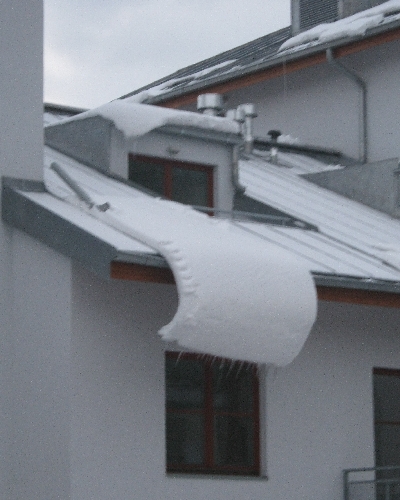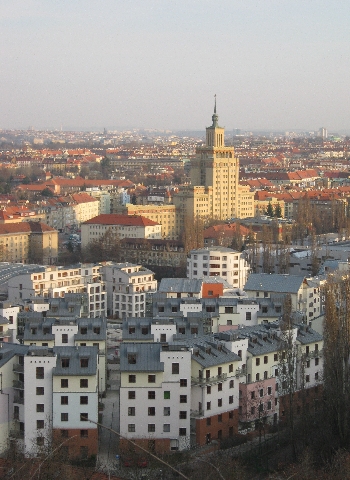
This winter will be the third one we have spent in Prague. In both 2008 and 2009, we had a dusting of snow before Christmas which soon rapidly melted. In both years, the really serious snow which settled and remained unmelted on the ground, didn’t arrive until January. However, this year, the snow has come early and hasn’t gone away since!
This winter, the first snow started falling during the night Sunday 28th – Monday 29th November. On the morning of Monday 29th November, I was booked to conduct assembly for Riverside Primary School which fortunately is located not far from the Chaplaincy flat. Normally, I hop in the car and drive there. Seeing the snow, I decided that discretion was the better part of valour and took the bus instead. Unlike in Britain, public transport in Prague doesn’t grind to a halt as soon as snow falls!
As it was the day after Advent Sunday, I spoke to the children about the Advent season and how we can use it to prepare ourselves for the coming of Christ. I also explained why Advent had begun the previous day and not on Wednesday 1st December when every commercial Advent calendar producer thinks it does! Here are the school children enjoying their break time out in the snowy playground immediately following my assembly. I’m sorry that the picture is a bit grey and grainy – it was still snowing when I took it!

The snow continued to fall leaving large accumulations. The photo above shows the front of my car twenty-four hours later.

Last week, we did have a couple of days when the temperature rose above 0 degrees and some of the snow began to melt. Besides causing some lying snow to turn to slush underfoot, a far more serious problem was accumulations of snow suddenly sliding off roofs and landing on unsuspecting individuals below.
I took this photo from our office in the Chaplaincy flat, looking across to the neighbouring block of flats which has recently been completed as part of the fourth and final stage of the Podbaba development. As you can see, a serious amount of snow is about to come off the roof! The sheer amount of snow also dislodged a piece of downpipe which has since crashed to the ground, along with the snow.
Then, just as I thought that all of the snow would melt, the temperature dropped below freezing again and earlier this week, yet more snow fell. The accumulation of snow hasn’t quite reached the proportions experienced in January this year, but it is rapidly heading in that direction.
In the midst of all this snow, life continues quite normally. Up the hill, behind the Podbaba flats complex, is a sports stadium. It is the home of Dukla Praha football team who currently are top of the Czech second division. Sensibly in view of the weather, they are currently on an extended mid-winter break and, having last played on Sunday 7th November, they are not due to play again until early in March 2011.
The football pitch is surrounded by a running track together with a variety of all-weather pitches and facilities. The stadium is also used for other events. Quite what event was being staged there last Tuesday evening I do not know? But what ever it was, it ended with a spectacular firework display. The Czechs seem to need little excuse for having a firework display and clearly, a serious amount of lying snow wasn’t going to stop them!













